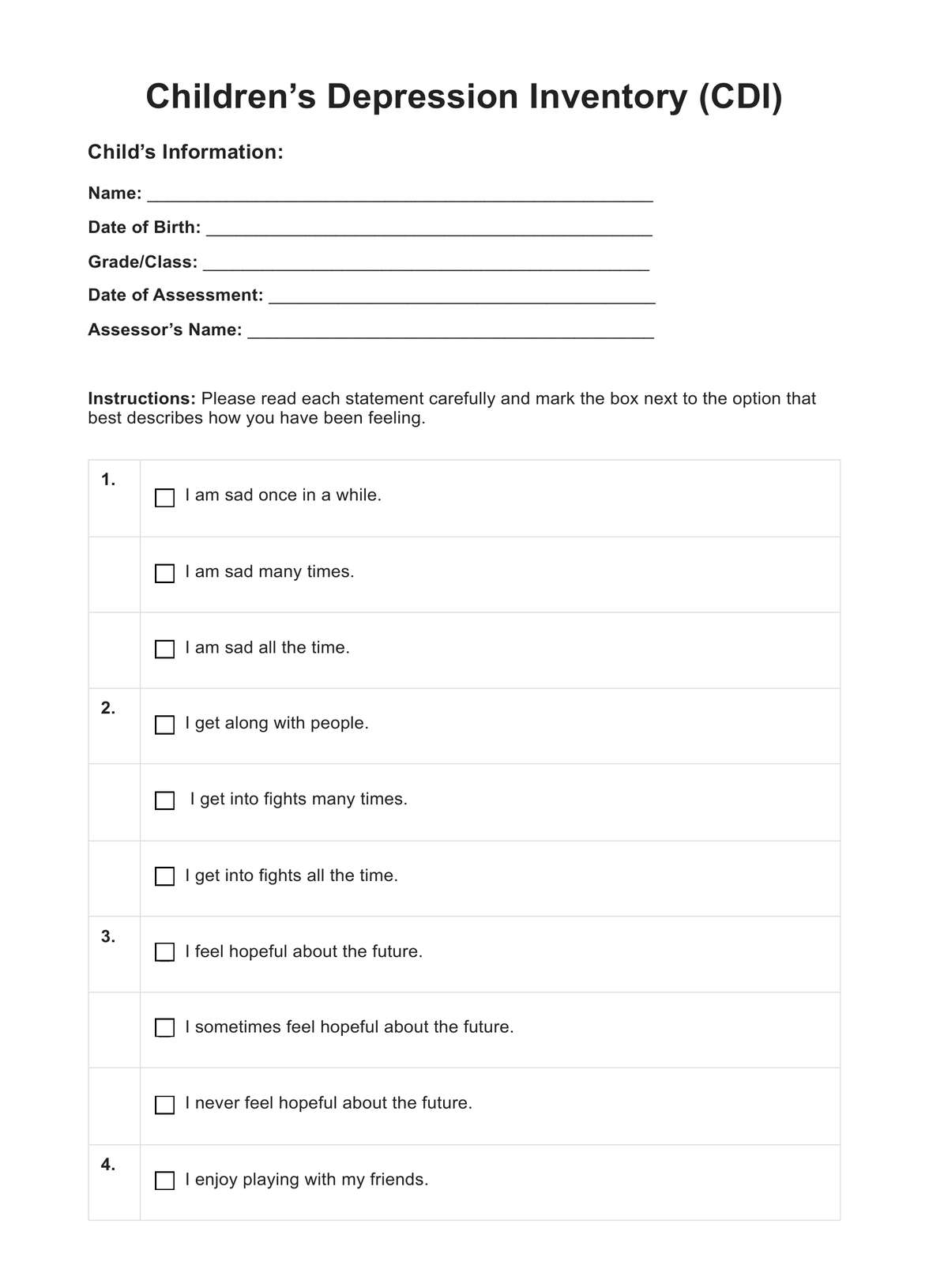Mental health professionals, educators, and counselors use it to assess depression in children.

Children's Depression Inventory
The Children's Depression Inventory is essential for assessing depression in young individuals. Discover how this tool aids mental health professionals.
Use Template
Children's Depression Inventory Template
Commonly asked questions
It is used for diagnosing depression, planning treatments, and monitoring the effectiveness of interventions.
Through a series of multiple-choice questions, the inventory evaluates symptoms of depression in children, allowing for accurate diagnoses and interventions.
EHR and practice management software
Get started for free
*No credit card required
Free
$0/usd
Unlimited clients
Telehealth
1GB of storage
Client portal text
Automated billing and online payments











